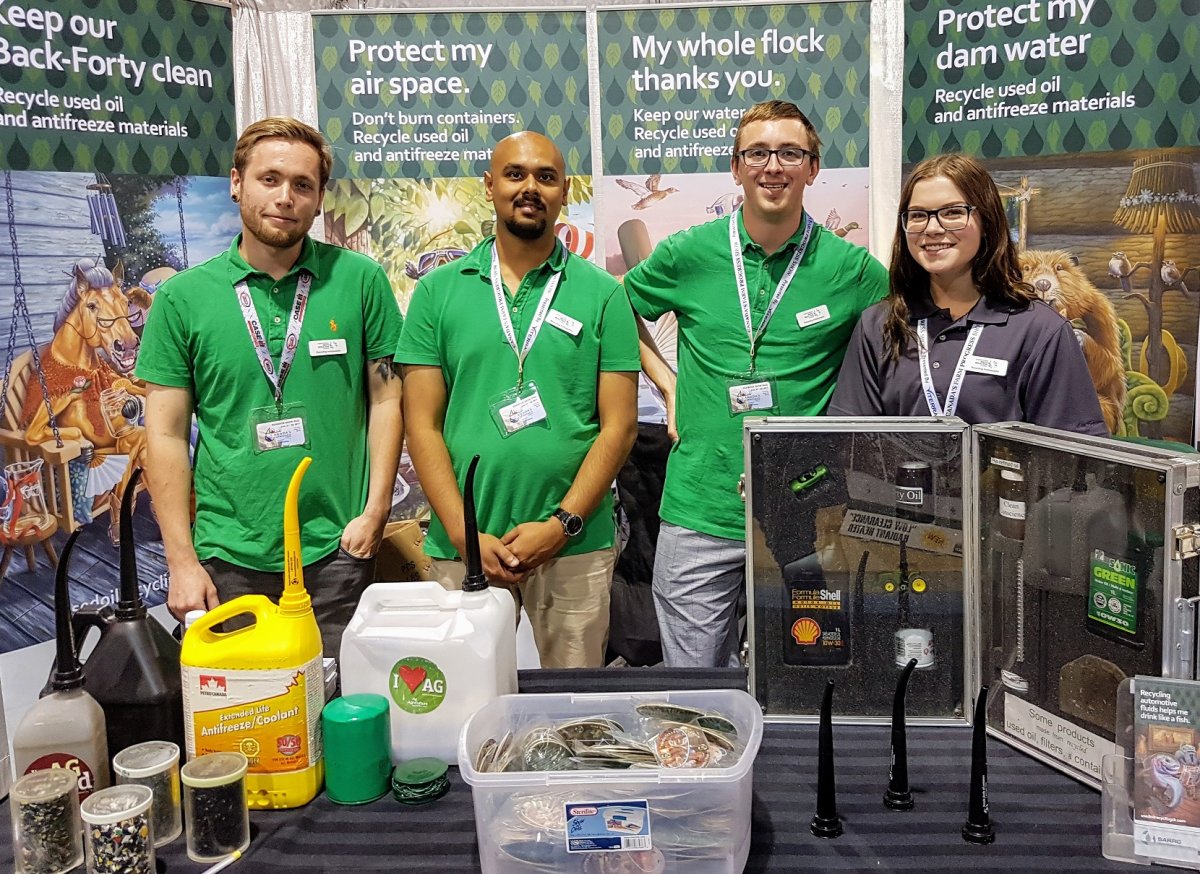Improper disposal and management of used oil can be hazardous to the environment.

A single litre of poorly-disposed used oil can contaminate 1-million litres of freshwater, which can harm aquatic ecosystems and humans.
Canadians use several hundred millions of litres of motor oil every year all this oil eventually needs changing and disposal.
That’s where the Saskatchewan Association for Resource Recovery Corporation (SARRC) comes in – an industry-led stewardship program that’s paving the way for a cleaner future by providing an efficient way for the public and businesses to properly manage automotive hazardous waste.
In partnership with SARRC and executive director Ethan Richardson, we take a look at Saskatchewan’s recycling success story and how used oil can be turned back into something useful.
How is oil recycled?
These days, technological advances in distilling and treating oil have most experts touting it as a renewable resource because of its ability to be cleaned and reused. But how used motor oil is actually recycled falls under two categories: re-refined and non-re-refined.
In the latter practice, used oil is filtered to remove water and contaminants. It’s then burned as fuel for things like power plants, space heaters, or asphalt. According to studies, that option is less desirable as it burns the actual oil while creating greenhouse gas emissions that can accumulate in the environment.
The more responsible oil recycling practice is to re-refine base stock and turn it into new lubricating oil. This occurs when used oil is distilled to remove remaining additives and metals picked up from the engine, and then treated in the same way conventional crude oil is refined.
According to SARRC, re-refining oil to its original lubricating properties is not only 100 per cent sustainable (since it can be repeated an infinite number of times), it also consumes a third of the energy it takes to refine crude oil.
Creating something useful
In addition to being re-refined into new lubricating oil, used motor oil serves as feedstock for machines and other industrial processes.
Oil derivatives can also help create life-saving medical devices and preservatives that keep food from spoiling. More than 6,000 products rely on oil derivatives and refined petroleum. Speakers, guitar strings, nail polish, crayons, perfume, candles and pillows are just some of them.
Meanwhile, old oil filters (which are separated in a heating process), are also transformed into a variety of new products including cars, construction rebar and scrap metal.
What is SARRC?
The non-profit organization was founded in 1997 by producers and sellers of lubricating oil, filters and antifreeze. The goal was to create a recycling network for these products and their plastic containers.
Today, the SARRC includes over 35 purpose-built EcoCentres and over 150 independent collection points across Saskatchewan for farmers, small businesses and DIY mechanics.
Since the program’s inception, Richardson says 6.1 million kilograms of plastic containers, 37.8 million filters and 343 million litres of used oil have been recovered and reused.
A cleaner future
The proper management of toxic materials like used oil and oil filters is important for maintaining clean waterways and a healthy environment. Used oil that’s dumped on soil or placed in a landfill that does not have proper engineered controls can leach and contaminate ground water, which can then travel to lakes, streams and wetlands.
Re-using oil not only helps the environment, it reduces the amount of new oil needed to be extracted and transported.
Less oil produced and transported reduces the chances of more catastrophic spills like the Exxon Valdez spill or Deepwater Horizon incident.
The organization is also involved in a national study to determine the volume of antifreeze available for recycling. With this information, they can better project recycling targets and increase its overall success rate in that category. Antifreeze became part of the program in 2014.
“Antifreeze is a priority issue for 2019,” Richardson says. “Part of it is that there are still some growing pains with the system. One of our focuses is to get small-volume generators, like independent garages, to set up a separate bin for their used antifreeze and another for used oil. If the used oil and used antifreeze are mixed, it is very hard to recover.”
A truly Canadian effort
SARRC is an exemplary provincial recycling success story. The organization was founded on the premise that a company should be responsible for the disposal or renewal of its own products.
This concept is known as Extended Producer Responsibility (EPR) and has been implemented in nearly every province for management of used oil materials.
“I wouldn’t say we’re unique within Canada now, as the model has been replicated within other provinces, but when the program originated 20 years ago in Alberta and Saskatchewan the concept of EPR was cutting edge,” Richardson says. “It certainly is a Canadian success story.”
For more information on SARRC visit www.usedoilrecyckingsk.com.



